Metal Gear Solid: Snake Eater 3D (Nintendo 3DS) Review
By Rudy Lavaux  24.03.2012
24.03.2012

At E3 2010, Konami announced that an entry in its highly successful Metal Gear Solid franchise would be coming to the 3DS. At the time, what was shown was a tech demo called The Naked Sample, based off the PS2 game Metal Gear Sold 3: Snake Eater, just meant to show off what they could achieve in real-time fully-autostereoscopic 3D, on the fledgling 3DS hardware. According to Hideo Kojima himself, this wasn't meant to become a full retail 3DS game in the long run. As it turns out today, we did get Metal Gear Solid: Snake Eater 3D after all, the first Metal Gear Solid title to be released on a Nintendo console since Metal Gear Solid: The Twin Snakes on GameCube. Let's now check whether Snake's mission through the Soviet jungle still manages to impress on 3DS, shall we?
Set in 1964, during the Cold War, Metal Gear Solid: Snake Eater 3D has players in the role of a CIA agent codenamed Naked Snake, who has to rescue a scientist named Sokolov, prisoner of a group of GRU soldiers in a jungle, in the midst of Soviet territory. The mission involves sneaking through the nature, preferably avoiding being spotted by the enemy, exploring enemy installations, and fighting bosses with, in most cases, supernatural abilities. It is still possible to go all out, shooting everything in sight if that's a preference, although this won't prove the most effective strategy most of the time.
Starting off pretty much naked (which is where the codename for the character comes from) since you have to build up your arsenal as you go. Exploring absolutely every corner of every area will prove very useful so players can broaden their possibilities and find new ways of overcoming certain obstacles. Making out the surroundings in dark areas, spotting a well concealed opponent amongst lush vegetation or being able to better blend in with environments are notable examples of what can be reaped from carefully looking everywhere.
This is all part of the basic Metal Gear Solid formula, but the third episode brought several new gameplay ideas when it originally came out. On top of already being able to crawl or squat against a wall to avoid being spotted, Snake Eater introduced the camouflage index. Players may choose from several different face paints and outfits (unlocking more as the game goes on), which allows camouflaging so the enemy cannot spot Snake quite as easily. The higher the ‘camo index,’ represented by a percentage, the less he stands out from the surroundings. On top of all the different outfits originally available, this 3DS version adds a new function called ‘photo camo.’ This basically lets the gamer choose a picture stored in the 3DS Photo Album and use it as a texture for clothes, creating personalised camouflage. Anything goes! While this makes the amount of possible camos practically infinite, it diminishes the interest in looking for all the hidden camos in the game, better than the default ones, making this sort of optional side quest all the more...optional.
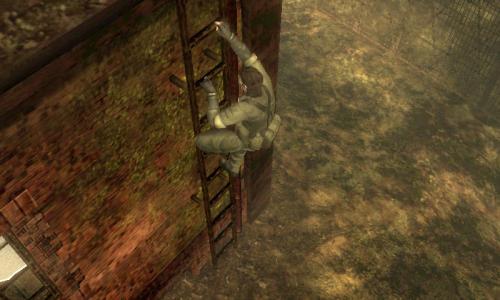
The art of concealing oneself is at the heart of the Metal Gear Solid: Snake Eater 3D, much more so than in previous games (at the time of the PS2 release) mostly due to the absence of a Solition Radar System like in the two previous episodes, which would have otherwise indicated where the enemy units are looking. Further refinements were also brought to the combat system and are faithfully reprised on the 3DS; close encounters can now be handled in a more refined way thanks to the inclusion of Close-Quarters-Combat, shortened in-game as CQC. This lets you, for instance, grab opponents and perform a variety of different moves, such as slaughtering and interrogating them, as well as knocking them and throwing them to the ground.
Another very important part of this episode revolves around fulfilling nutritional needs. As time passes, Snake’s stamina gauge (different from a traditional health bar) goes down. The more physical the action, the faster it reduces; so to replenish stamina, food must be eaten. Again, anything goes. Any available weapon can be used to catch local fauna -- dead or alive -- and eat it. Dead animals go off over time, though, so this has to be taken into consideration if planning to keep huge amounts of meat on your person during the journey.
Finally, different kinds of illness and injuries are now actually managed by the game. Indeed, you can be injured by a bullet, break a leg after a bad fall or as a result of a close encounter gone wrong, fall ill after eating something bad, and s on...Different kinds of treatments are possible, like using a splinter and bandage for a broken limb or having a serum injection after being bitten by a venomous snake. Again, the medical supplies come in limited quantity, so the player has to look out for more whilst exploring Metal Gear Solid: Snake Eater 3D’s treacherous terrain.
All these action are performed quite easily, and whilst the Circle Pad(s) on the 3DS feel(s) different from traditional analogue sticks like those of the PlayStation 2’s DualShock, the game controls wonderfully when the Circle Pad Pro (CPP) is being used. However, the same can't be said when not in possession of one. The cumbersome controls from Metal Gear Solid: Peace Walker on PlayStation Portable are being used here, unfortunately.
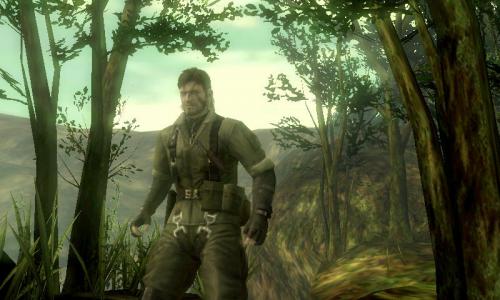
When the CPP is used, the game controls essentially the same as it did in the Subsistence version on PlayStation 2, with the basic actions assigned to the ABXY buttons, aiming and shooting with the L, R, ZL and ZR triggers. When it's absent, ABXY are used for moving the camera, whilst the D-Pad becomes the only option for crouching and crawling, and, finally, the only two triggers that are then available are there for aiming and shooting.
Being forced to rely on an optional peripheral, which isn't even available in a bundle, to be able to find the adequate comfort required for playing the game won't go too well with every gamer out there. That being said, those already about to put up with the controls on PSP won't have any problems here either, with some maybe even finding them more comfortable due to the Circle Pad being larger than the nub found on the PSP. This version also introduces the capacity to walk while crouching, a feature from Metal Gear Solid 4: Guns of the Patriots, which helps a lot. The 3DS version is the only one to include this, along with the obvious touch screen shortcuts that help making the experience even more of a joy to play.
It is worth mentioning that Metal Gear Solid: Snake Eater 3D also brings a couple of further enhancements compared to the original, namely in the visual department. On the whole, the game still looks very much like its PS2 counterpart, especially in terms of textures, which is strange given how good they actually looked in the initial “Naked Sample” demo compared to the final product. Those haven't aged particularly well. However, most of the main character models have a noticeably higher polygon count and some new textures. This doesn't show too much during actual gameplay, but becomes obvious during important cut-scenes that are heavy on character close ups. Additional graphical effects that couldn't have been achieved originally, taking advantage of the shaders of the PICA200 graphic processor, were also added in places to further improve the graphics. Sadly, the game suffers from important drops in frame rate. This rarely happens when the player is actually playing and will be experienced mainly in the more action filled cut-scenes, but it's still there, and it's justifiable to gripe when they happen. This isn't even solved by turning the 3D effect off, which makes this even stranger.
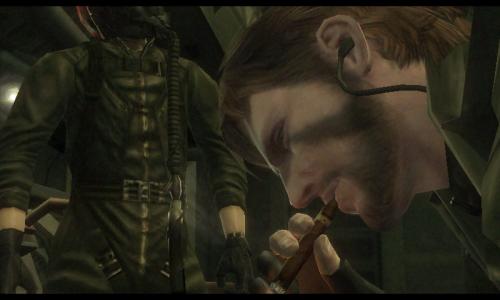
This brings us to the most obvious novelty of Metal Gear Solid: Snake Eater 3D: the autostereoscopic 3D. The 3D effect in Konami’s 3DS upgrade works incredibly well with the environments full of vegetation giving an invaluable grasp of the depth of scenery and the distance between the trees and other foliage. Crawling through tall grass, seeing it subtly popping out of the screen whilst advancing, and seeing enemies patrolling in the distance beyond it are only some of thrilling experiences to be had. Additionally, it adds a lot to the plentiful supply of lengthy cut-scenes, too, giving almost the sense of watching an interactive 3D movie in places.
The other side of the coin, though, is that all these long movie-like cut-scenes and long codec conversations make it a game that ends up not being well suited to portable gaming. When your battery is in the red, which happens soon enough on 3DS, especially when playing with the 3D effect on (which is a must for Metal Gear Solid: Snake Eater 3D) and having to face long conversations that players dare not skip for fear of missing an important plot piece, it gives you a bad feeling. All you want to do is save your progress but they keep on talking. This is expected from a Metal Gear game, sure, but this doesn't suit gameplay on the go very much.
Speaking of the codec conversations, the voice over work isn't stellar, and while certain dialogue scenarios can be quite funny, others (about old movies) can be quite boring. Again, this is typical Metal Gear stuff, so fans expect that, but non-fans will be glad to see that those can be skipped at times. The 3DS version has a couple of new codec dialogue sequences too, for explaining the touch screen commands and some of the new things brought to the table. Strangely, those new ones suffer from bad compression issues; and the voice acting actually manages to sound even worse, with the characters speaking with a noticeably lighter tone than they usually do; but at least the right voice actors were brought back. Those particular and very occasional sections apart, sound is excellent in Metal Gear Solid: Snake Eater 3D. Use of headphones is a must in order to appreciate the game to its full extent, especially for spotting the sound of enemy footsteps and determining where they come from.
It's worth noting that Hideo Kojima originally stated, when the ’Naked Sample’ demo was first shown, that should a fully fledged Metal Gear game come to the 3DS, it would be a game that takes elements from existing portable episodes, like the co-operative mode from Peace Walker, meaning that it would be designed with portability in mind. Why this didn't happen in the end is unknown. Also, the HD Collection for Xbox 360 and PS3 came out in Europe a month prior to this 3DS release, and offers three games for the price that of Metal Gear Solid: Snake Eater 3D and a Circle Pad Pro together, and also includes the Subsistence edition of Metal Gear Solid 3, complete with its bonuses. Konami timing the release of these two products together is poor, almost killing the 3DS game before release.
To sum it up: Metal Gear Solid: Snake Eater 3D offers portability, impressive stereoscopic 3D, slightly improved graphics, photo camo, the new hunt for the Yoshis, an equipment management interface made more intuitive than ever thanks to the touch screen and the inclusion of the crouch walk. However, it has a perfectible frame rate and requires a Circle Pad Pro to be truly comfortable to play. On the other hand, the HD Collection simply offers the PS2 experience brought to HD, complete with the Subsistence bonuses, two more games added to the mix, of which Peace Walker with the addition of a much needed dual stick control scheme, is one. Metal Gear Solid 3 was and remains possibly the best episode in the much loved franchise, whether it's on 3DS or on HD consoles. Your choice should be made based on what consoles you have access to and your own preferences. However, know that Metal Gear Solid: Snake Eater 3D on Nintendo 3DS is an excellent game, worthy of your money.
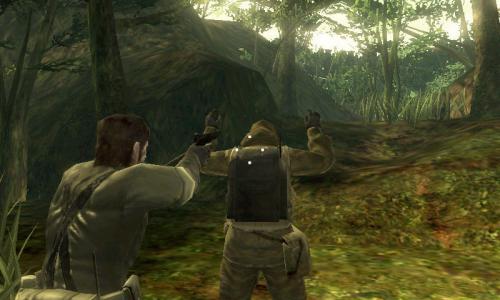
Cubed3 Rating
Great - Silver Award

Metal Gear Solid: Snake Eater 3D is the best cinematic experience to be witnessed on the Nintendo 3DS, full stop. However, the very fact that it is such a deep and involving game makes it not so suitable for handhelds. Players will want to experience it under conditions that simply can't be found outdoors, like at home, in a hotel room or during very long trips on public transport, and preferably a quiet environment without kids shouting. This purchase has to be considered wisely beforehand for the aforementioned reason, despite the game still being such an awesome one -- albeit one that a lot of gamers have probably already experienced in the past.
Comments
Comments are currently disabled

 Sign In
Sign In Game Details
Game Details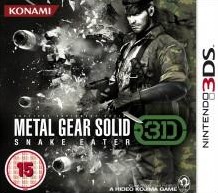
 Out now
Out now  Out now
Out now  Out now
Out now  Out now
Out now  Subscribe to this topic
Subscribe to this topic Features
Features





 Top
Top

